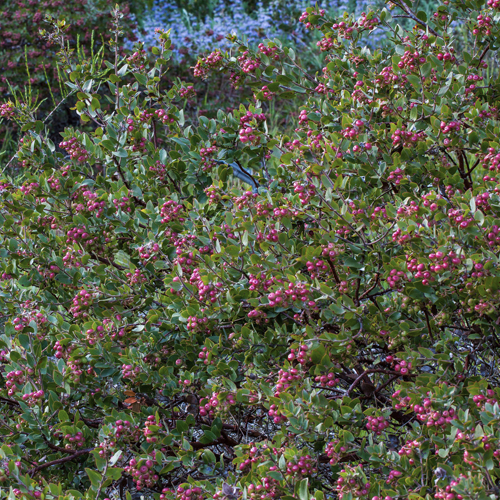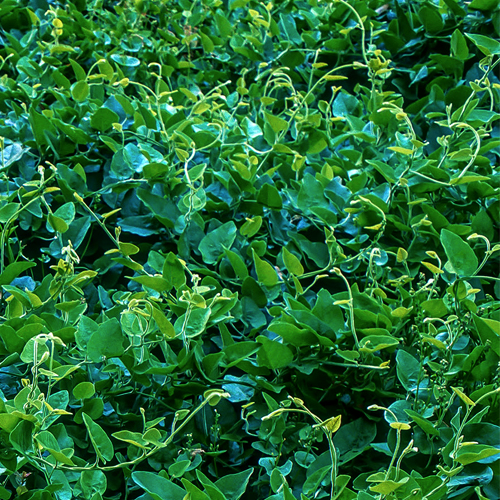Manzanita Garden
BACK TO FULL TOUR
Garden Features
Drought Tolerant
Edible Garden
Graywater System
California Natives
Deer Resistant
Pesticide Free
Reclaimed/Recycled Materials
Lawn-Free Landscaping
Wildlife Habitat
Garden Development and History
Myself and Sherrie Althouse opened California Flora Nursery for business in 1981 as a native plant nursery. We had previously worked together running Circuit Riders’ revegetation nursery. California Flora Nursery emphasizes natives, relatively small container sizes, in-house propagation, and species and genetic diversity. Most of the non-natives we grow are well adapted to our Mediterranean climate.
Awards received include the 2012 Russian Riverkeeper Business Stewardship Award for our dedication and commitment to improving the health of the Russian River and the environment, the 2002 Annual Award from the California Horticultural Society for contributions to California horticulture, and the Sonoma County Water Agency 1988 Xeriscape Award of Excellence in appreciation of our plant materials.
Sherrie and I are both past presidents of the Milo Baker (Sonoma County) Chapter of the California Native Plant Society. We share a deep love and affinity for the native flora and work to propagate it by seed and cuttings to make local selections available to the wider public.
As some sections of the Manzanita Garden began almost twenty years ago when I was dating my now-wife Mary. I owned Cal Flora Nursery and I supplied the native plants she requested for her garden and we collaborated too – more details below.
About the Garden:
California Natives:
In 2014, we married and built an addition which allowed for the creation of two sandy mounds of “waste soil” generated by construction of the foundation. I used those mounds to create a naturalistic CA native “rock garden” of manzanitas, buckwheats, dudleyas, & native annuals in-season. Many of the plants were grown from cuttings or seed I collected responsibly in the wild. Sebastopol has an acidic fine-sand soil with virtually no native rocks, but we had a pile of previously purchased Sonoma Fieldstone displaced by construction, which I was very happy to integrate. Other than vegetable beds & fruit trees the garden is almost entirely California Natives with a strong emphasis on plants native to the North Bay.
Oak Woodland:
The garden is created to evoke environments we love being-in in nature: woodland, chaparral and coastal bluff. My intent is also to create a personal native plant botanic garden of sorts. With their own unique genes the locally adapted native plants help to preserve biodiversity, in and of themselves. They also provide habitat for native insects & birds. In the back of the garden two remnants of the native forest grow, a large Coast live-oak & a Black oak. The live-oak in particular host a constant stream of native birds, including Oak titmice, Orioles, Bushtits, Nuthatch, and as a perch for Red shoulder hawks & Great horned owl.
Water Use:
A gray-water system was installed for our washing machine which allows us to irrigate either our fruit trees or along the northwest side of our house where Pacific dogwood is thriving on the moisture. The rest of the garden is irrigated by hand with a hose & water-breaker as needed.
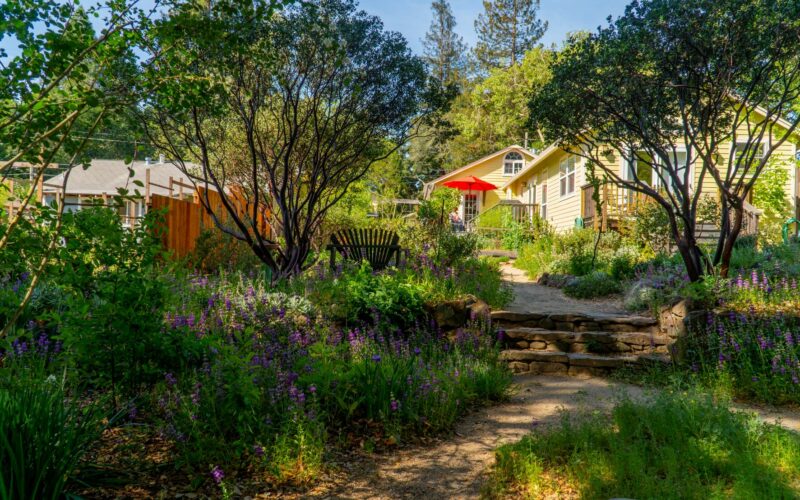
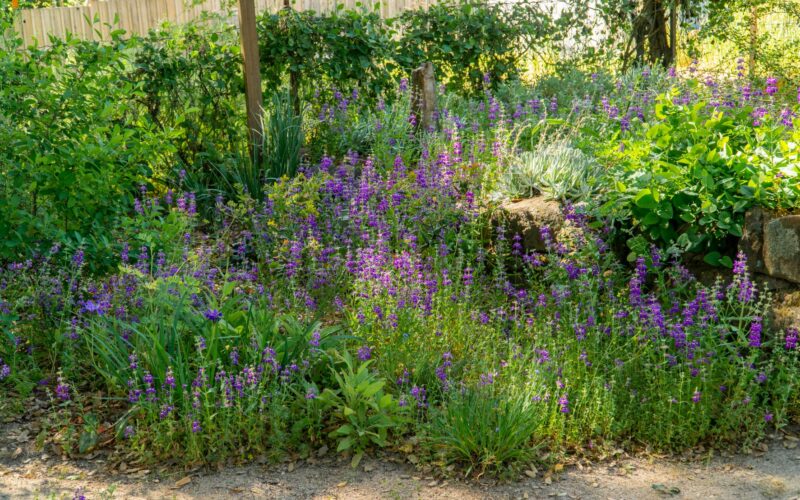
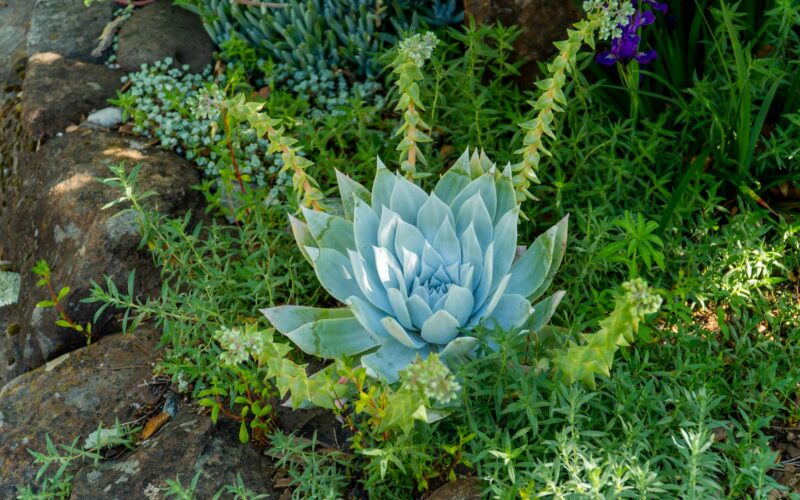
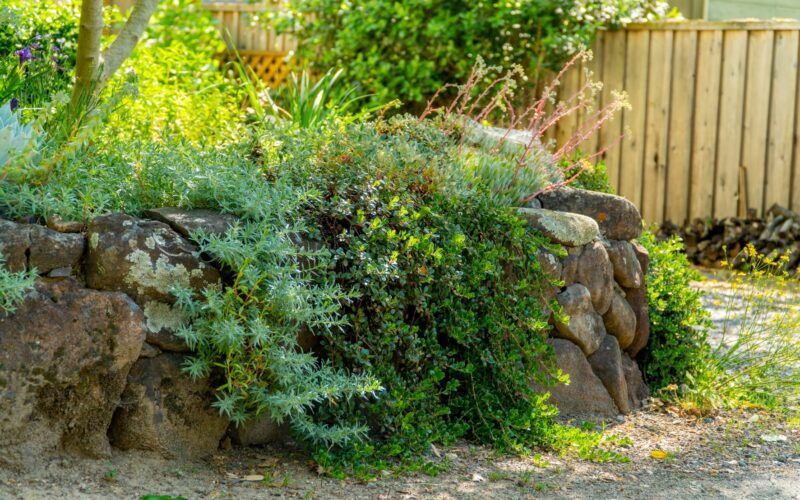
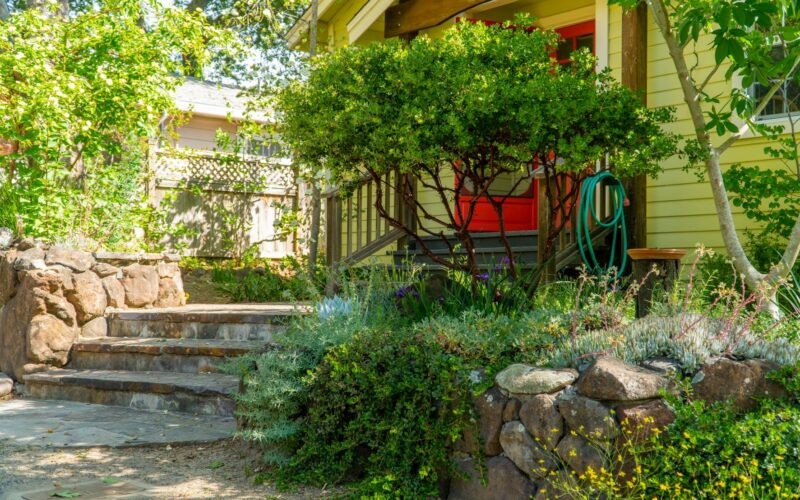
Plants in this Garden
Favorite Plants
Tall manzanitas
Arctostaphylos manzanita selections made from Sebastopol/Forestville often have some Arctostaphylos densiflora genes, an example is Arctostaphylos ‘Monica’.
Prostrate manzanitas
Arctostaphylos uva ursi, Arctostaphylos nummularia, Arctostaphylos hookeri ‘Monterey Carpet’ and others
Cornus nuttallii, Pacific Dogwood or Mountain Dogwood
We have three Western dogwood in the garden and one hybrid Cornus x ‘Eddies White Wonder’, a cross between the Eastern US flowering dogwood and the Western.
Native ferns
Giant Chain fern, Five-finger fern, Gold-back fern, Leather fern, CA maidenhair fern, Coffee fern, Bird’s foot trefoil…
Favorite Garden Suppliers
California Flora Nursery
2990 Somers Street Fulton
Phil co-created in California Flora Nursery in 1981and where he worked until his retirement a year ago. It is the nursery from which the garden was created. We love California Flora Nursery.
